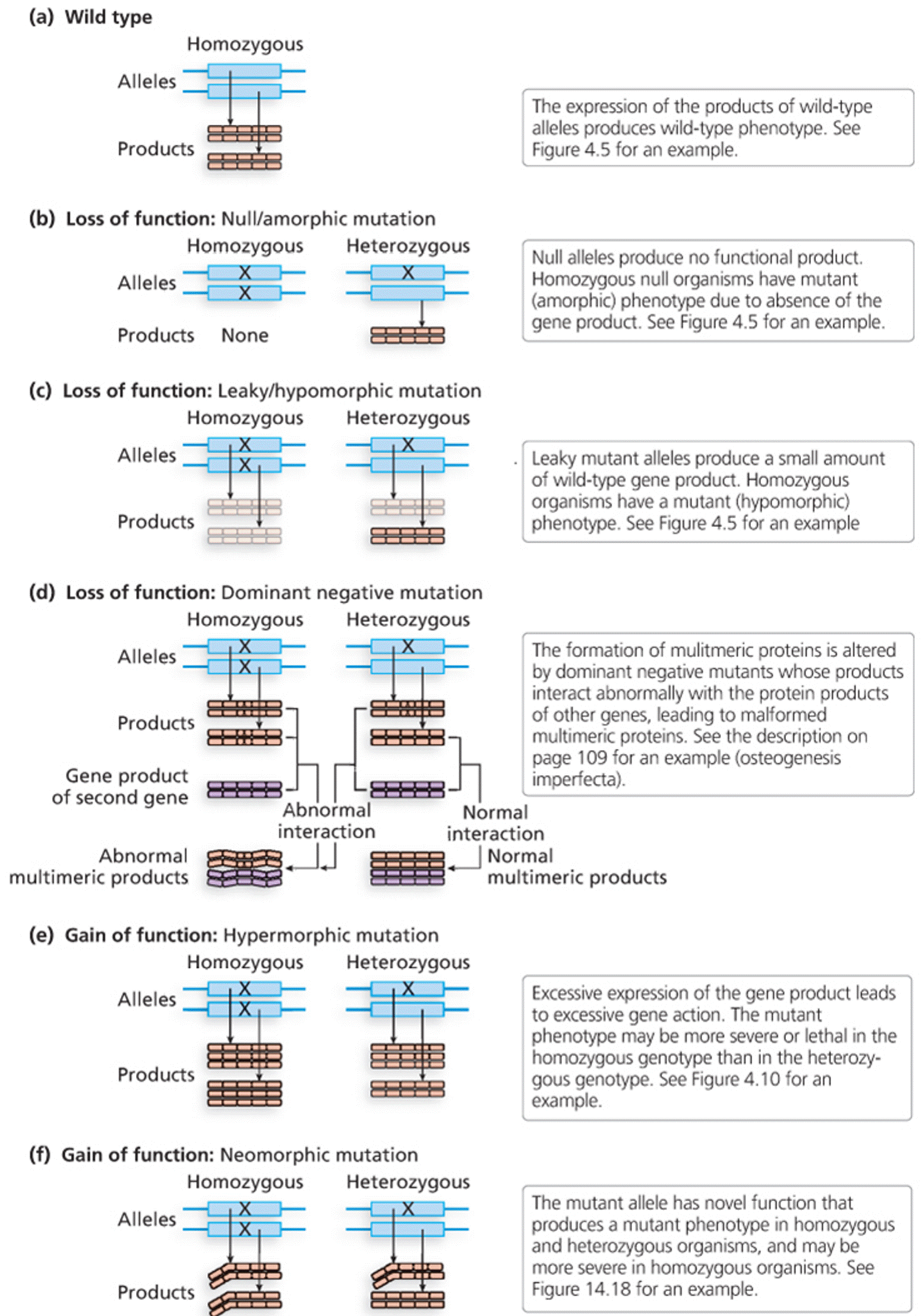 |
| Previous Image | Next Image |
| Description: (a) Wild type. (b), (c), and (d) Loss-of-function mutations. (e) and (f) Gain-of-function mutations. The “X” indicates the presence of a mutation in a copy of a gene(a) Wild type. (b), (c), and (d) Loss-of-function mutations. (e) and (f) Gain-of-function mutations. The “X” indicates the presence of a mutation in a copy of a gene (a) Wild type Homozygous Alleles Products (b) Loss of function: Null/amorphic mutation Homozygous Heterozygous - “I Alleles _—_ Products None (c) Loss of function: Leaky/hypomorphic mutation Homozygous Heterozygous (d) Loss of function: Dominant negative mutation Homozygous Heterozygous Alleles Products . 1W l—|: . 1 Gene product h of second gene n m Abnormal Normal interaction interaction ' Normal multimeric products Abnormal multimeric products ._IJ (e) Gain of function: Hypermorphic mutation Homozygous Heterozygous (f) Gain of function: Neomorphic mutation Homozygous Heterozygous Alleles Products 'The expression of the products of wild-type . Figure 4.5 for an example, Null alleles produce no functional product. . Leaky mutant alleles produce a small amount phenotype. See Figure 4.5 for an example alleles produces wild-type phenotype. See Homozygous null organisms have mutant (amorphic) phenotype due to absence of the gene product. See Figure 4.5 for an example. of wild-type gene product. Homozygous organisms have a mutant (hypomorphic) lhe formation of mulitmeric proteins is altered I Excessive expression of the gene product leads ; The mutant allele has novel function that by dominant negative mutants whose products interact abnormally with the protein products of other genes leading to maiformed multimeric proteins. See the description on page 109 for an example (osteogenesis imperfecta) 'i to excessive gene action. The mutant . phenotype may be more severe or lethal in the ; homozygous genotype than in the heterozy- gous genotype. See Figure 4.10 for an example. produces a mutant phenotype in homozygous and heterozygous organisms, and may be more severe in homozygous organisms. See 2 Figure 1418 for an example. Picture Stats: Views: 131 Filesize: 618.69kB Height: 2216 Width: 1552 Source: https://biology-forums.com/index.php?action=gallery;sa=view;id=49012 |
